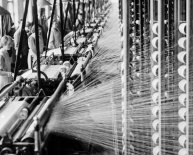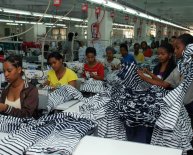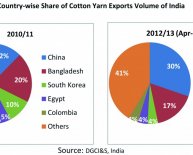
History of the textile industry
- first to harvest and clean the fiber or wool
- second, to card it and spin it into threads
- third, to weave the threads into cloth
- and, finally to fashion and sew the cloth into clothes
Great Britain's Lead in Textile Machinery
During the early eighteenth century, Great Britain was determined to dominate the textile industry. Laws forbade the export of English textile machinery, drawings of the machinery, and written specifications of the machines that would allow them to be constructed in other countries.Britain had the power loom, a steam-powered, mechanically-operated version of a regular loom for weaving. Britain also had the spinning frame that could produce stronger threads for yarns at a faster rate.
Meanwhile the stories of what these machines could do excited envy in other countries. Americans were struggling to improve the old hand loom, found in every house, and to make some sort of a spinning machine to replace the spinning wheel by which one thread at a time was laboriously spun.
continue reading below our video
Profile of Samuel Slater
American Failures with Textile Machinery and the American Textile Industry Flounders
In 1786, in Massachusetts, two Scotch immigrants, who claimed to be familiar with Richard Arkwright's British-made spinning frame, were employed to design and build spinning machines for the mass production of yarn. The inventors were encouraged by the U.S. government and assisted with grants of money. The resulting machines, operated by horse power, were crude, and the textiles produced irregular and unsatisfactory.In Providence, Rhode Island another company tried to build spinning machines with thirty-two spindles. They worked badly and all attempts to run them by water-power failed. In 1790, the faulty machines were sold to Moses Brown of Pawtucket. Brown and his partner, William Almy, employed enough hand-loom weavers to produce eight thousand yards of cloth a year by hand. Brown needed working spinning machinery, to provide his weavers with more yarn, however the machines he bought were lemons. In 1790, there was not a single successful power-spinner in the United States.

















